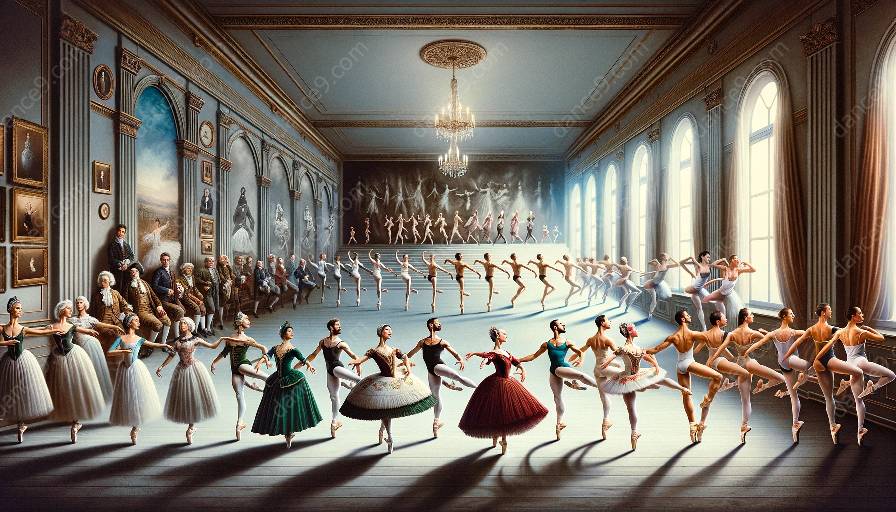Ballet, as an art form, has undergone a significant evolution in both technique and style over the years. This topic cluster will delve into the comparison of classical and contemporary ballet techniques, their impact on the evolution of ballet as a dance form, and their relevance to ballet history and theory.
The Evolution of Ballet Techniques
Ballet, originally developed in the Italian Renaissance courts of the 15th and 16th centuries, has evolved from the formalized and elaborate court dances of that time to the technically demanding and expressive art form we know today. The evolution of ballet techniques can be traced through the centuries, with influences from various countries and choreographers.
Classical ballet techniques emerged in the 17th century, characterized by its formalized and highly technical movements. Over time, this gave rise to contemporary ballet techniques, incorporating new movements and styles, often breaking away from traditional ballet conventions.
Classical Ballet Techniques
Classical ballet techniques are rooted in centuries-old traditions and are characterized by traditional movement vocabulary, positions, and aesthetic principles. The style is known for its emphasis on turnout, pointe work, and the use of classical music. The key elements of classical ballet include precise and highly technical movements, as well as a focus on grace, symmetry, and harmony.
Key Elements of Classical Ballet Techniques:
- Turnout and alignment
- Pointe work
- Codified movement vocabulary (e.g., positions, arabesques, pliés)
- Emphasis on symmetry and precision
- Incorporation of classical music
Contemporary Ballet Techniques
Contemporary ballet techniques, on the other hand, have evolved to incorporate a wider range of movement styles, often integrating elements of modern dance and other forms of expression. This style tends to be more fluid, freeform, and innovative, often challenging traditional ballet norms and conventions.
Key Elements of Contemporary Ballet Techniques:
- Exploration of diverse movement styles
- Integration of modern dance elements
- Emphasis on expression and emotion
- Innovation and experimentation with movement vocabulary
- Use of varied and non-traditional music
Impact on Evolution of Ballet
The contrasting styles of classical and contemporary ballet techniques have significantly impacted the evolution of ballet as an art form. While classical techniques form the foundational elements of ballet, contemporary techniques have pushed the boundaries, allowing for greater freedom of expression and creativity.
The evolution of ballet techniques reflects the changing cultural, social, and artistic landscape of different time periods. As contemporary ballet continues to evolve, it adds new dimensions to the rich history of ballet, expanding the possibilities for dancers, choreographers, and audiences alike.
Relevance to Ballet History and Theory
Studying classical and contemporary ballet techniques is crucial to understanding the historical and theoretical underpinnings of ballet. It provides insight into the cultural and artistic contexts that have shaped these techniques over time, as well as the principles and innovations that have driven the evolution of ballet as a whole.
By examining the differences, similarities, and innovations in classical and contemporary ballet techniques, one gains a deeper appreciation for the diverse artistic expressions within the ballet world. This exploration also sheds light on the interconnectedness of ballet history and theory, showcasing how techniques have evolved alongside broader artistic and cultural movements.





























